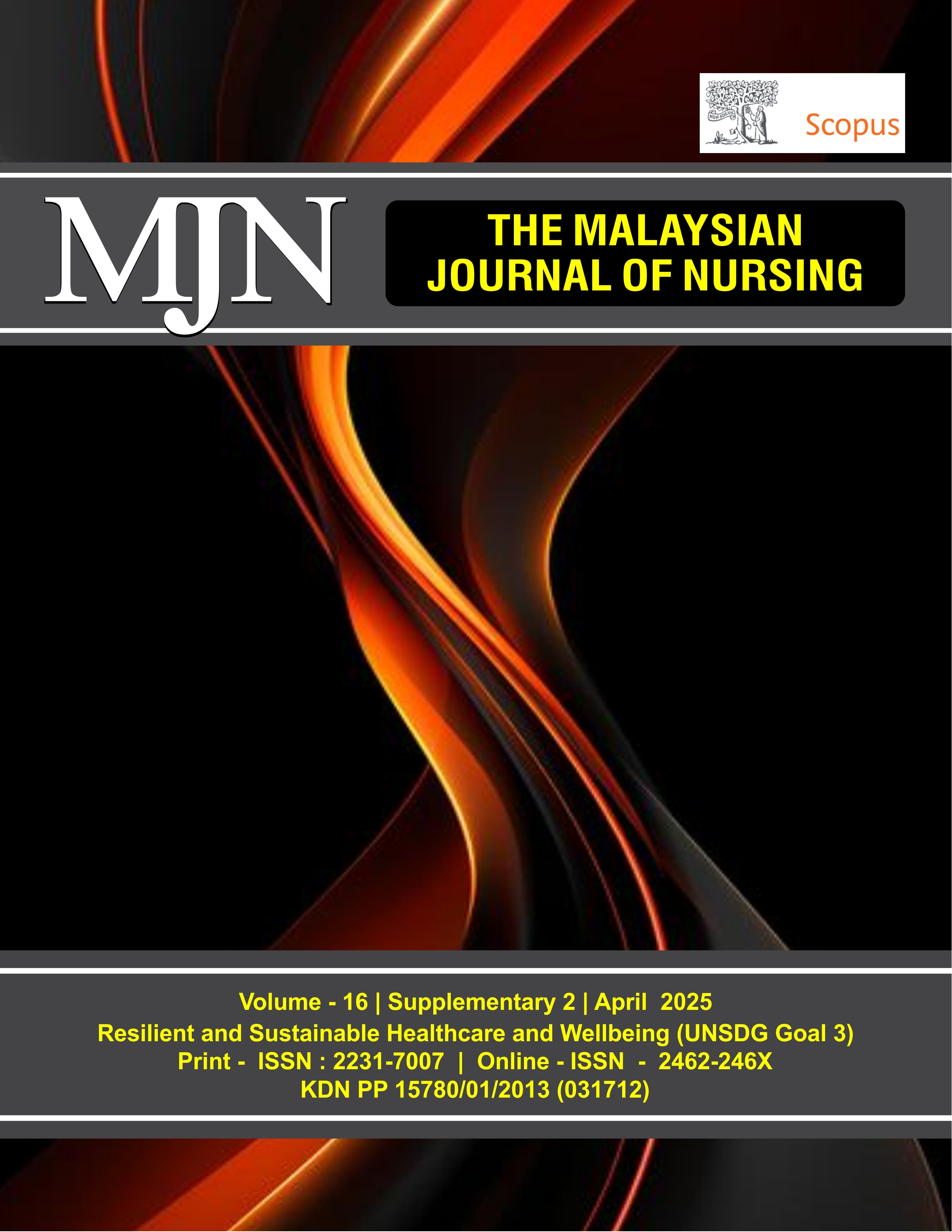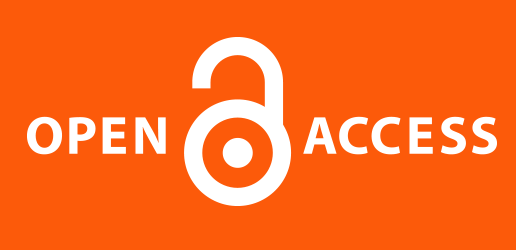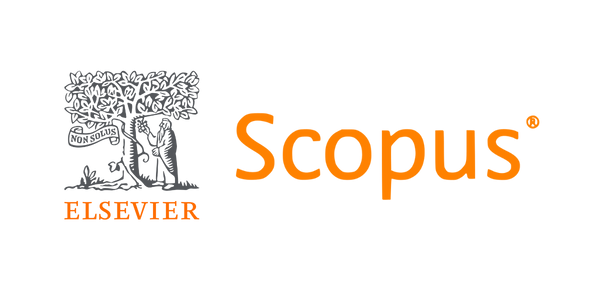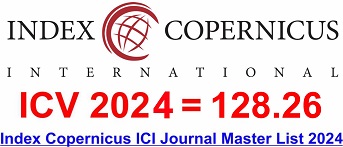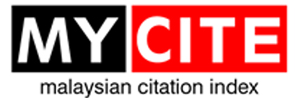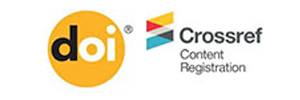Leveraging Mobile Applications for Stunting Prevention in Indonesia: A Scoping Review
DOI:
https://doi.org/10.31674/mjn.2025.v16isupp2.018Abstract
Background: Stunting, a critical public health issue in Indonesia, affects child growth and development, with long-term impacts on cognitive and economic potential. Mobile applications (mHealth) are emerging as transformative tools for addressing stunting by enhancing early detection, education, and intervention. However, their effectiveness in improving maternal knowledge and child nutritional outcomes remains underexplored. Objective: This scoping review evaluates the role of mobile applications in stunting prevention in Indonesia. Methods: A scoping review was conducted following PRISMA-ScR guidelines. Relevant studies published between 2018 and 2024 were identified using electronic databases, including PubMed, Scopus, and Web of Science. Studies were included if they focused on mobile-based stunting prevention applications in Indonesia and reported outcomes related to child growth, maternal knowledge, or nutritional improvements. Quality appraisal was performed using validated tools, and thematic analysis was applied to synthesise data. Results: Out of 106 identified records, 12 studies met the inclusion criteria. These studies highlighted the diverse functionalities of mHealth applications targeting stunt prevention, including early detection, educational interventions, behavioural change support, and monitoring systems. Applications like AECAS and Edu Stunting significantly improved maternal knowledge and attitudes (p < 0.05), while tools like SCATION enhanced skills for early stunting detection. Monitoring systems, such as Smart Ting, facilitated growth tracking and resource allocation. Although users reported high satisfaction, challenges such as limited long-term impact on nutritional outcomes and cultural misconceptions were noted. Conclusion: Mobile applications exhibit promising potential in addressing stunting through early detection, education, and intervention. Future research should prioritise longitudinal studies and user-centred designs to enhance scalability and sustainability.
Keywords:
Child Nutrition, Early Detection, Health Interventions, mhealth, Mobile Applications, Scoping Review, Stunting PreventionDownloads
References
Ayed, M. M. A, Ali, F. K. Y, & Sayed, E. S. M (2021). Effect of Mothers’ Nutritional knowledge, attitude, and practices in childcare on the growth of children. Egyptian Journal of Health Care, 12(2), 371–382. Retrieved from: https://ejhc.journals.ekb.eg/article_161003_cd2f409edfce63003675e75ea6ae9981.pdf. Accessed on 11th July, 2024
Abdalla, M., Zein, M. M., Sherif, A., Essam, B., & Mahmoud, H. (2024). Nutrition and diet myths, knowledge and practice during pregnancy and lactation among a sample of Egyptian pregnant women: A cross-sectional study. BMC Pregnancy and Childbirth, 24(1), 140. https://doi.org/10.1186/s12884-024-06331-3
Bagus, R., & Romli, A. (2024). Mobile health monitoring application as an effort to detect stunting in early childhood based on android. INOVTEK Polbeng-Seri Informatika, 9(2), 679–689. https://doi.org/10.35314/6m2tse18
Baumel, A. (2022). Therapeutic activities as a link between program usage and clinical outcomes in digital mental health interventions: A proposed research framework. Journal of Technology in Behavioural Science, 7(2), 234–239. https://doi.org/10.1007/s41347-022-00245-7
Bhandari, D., Robinson, E., Pollock, W., Watterson, J., Su, T. T., & Lokmic-Tomkins, Z. (2025). Mapping multilevel adaptation response to protect maternal and child health from climate change impacts: A scoping review. IScience. https://doi.org/10.1016/j.isci.2025.111914
Bitomsky, L., Pfitzer, E. C., Niben, M., & Kowatsch, T. (2024). Advancing health equity and the role of digital health technologies: a scoping review protocol. BMJ Open, 14(10). https://doi.org/10.1136/bmjopen-2023-082336
Ding, X. (2025). Understanding the use of mobile health (mHealth) to increase mental health care service access for youth (Doctoral dissertation, University of British Columbia). https://dx.doi.org/10.14288/1.0448344
Erika, K. A., Fadilah, N., Latif, A. I., Hasbiah, N., Juliaty, A., Achmad, H., & Bustamin, A. (2024). Stunting super app as an effort toward stunting management in Indonesia: Delphi and Pilot Study. JMIR Human Factors, 11. https://doi.org/10.2196/54862
Hasan, D. S., Arief, Y. S., & Krisnana, I. (2024). Mobile application intervention to improve nutritional literacy of mothers with stunting children: A systematic review. Pediomaternal Nursing Journal, 10(2), 70–75. https://doi.org/10.20473/pmnj.v10i2.47436
Hidayat, F. P., Sutisna, M., Rowawi, R., Wijayanegara, H., Garna, H., & Rachmiatie, A. (2021). Android-based Stunting Child Nutrition Application (GiAS) to Assess Macro-nutrients, Zinc, and Calcium in Stunting and Non-stunting Under Two Children. Global Medical & Health Communication (GMHC), 9(1), 61–68. https://doi.org/10.29313/gmhc.v9i1.6708
Hossain, M., Choudhury, N., Abdullah, K. A. B., Mondal, P., Jackson, A. A., Walson, J., & Ahmed, T. (2017). Evidence-based approaches to childhood stunting in low and middle income countries: A systematic review. Archives of Disease in Childhood, 102(10), 903–909. https://doi.org/10.1136/archdischild-2016-311050
Indrayana, T., Warijan, W., Sutarmi, S., Purnomo, D., & Gunawan, I. (2022). Developing systems application based on android as tool for determinant stunting factors in the COVID-19 pandemic era. International Journal of Health Sciences, I, 257–268. https://doi.org/10.53730/ijhs.v6nS1.4763
Karim, H., & Ariatmanto, D. (2024). Methods for Development Mobile Stunting Application: A Systematic Literature Review. Sinkron: Jurnal Dan Penelitian Teknik Informatika, 8(1), 244–257. https://doi.org/10.33395/sinkron.v9i1.13123
Marlinawati, D. A., Rahfiludin, M. Z., & Mustofa, S. B. (2023). Effectiveness of media-based health education on stunting prevention in adolescents: A systematic review. AgriHealth: Journal of Agri-Food, Nutrition and Public Health, 4(2), 102–111. http://dx.doi.org/10.20961/agrihealth.v4i2.71357
Michie, S., Yardley, L., West, R., Patrick, K., & Greaves, F. (2017). Developing and evaluating digital interventions to promote behaviour change in health and health care: Recommendations resulting from an international workshop. Journal of Medical Internet Research, 19(6). https://doi.org/10.2196/jmir.7126
Mukodri, D. M. L., Safitri, T., Ridayani, R., Elba, F., & Siregar, N. S. A. (2024). Booklet preventing stunting based Android application (Bocesting) as a tool to enhance maternal nutritional behaviour and nutritional status. Healthcare in Low-Resource Settings, 12(1). https://doi.org/10.4081/hls.2023.11982
Nurfajriyani, I., & Andhini, C. S. D. (2022). The Effectiveness of Educational Applications to Prevent Stunting Children (AECAS) on Perceptions of Stunting Prevention. Budapest International Research and Critics Institute-Journal, 5(4), 29069–29076. https://doi.org/10.33258/birci.v5i4.7059
Nurisna, A. I., Kundarti, F. I., & Rahmaningtyas, I. (2023). Effectiveness of android-based application (Nosting) for Early detection of stunting and growth and development screening in children aged 12-24 months. International Journal of Current Science Research and Review, 6(10). https://doi.org/10.47191/ijcsrr/V6-i10-24
Nyapwere, N., Dube, Y. P., & Makanga, P. T. (2021). Guidelines for developing geographically sensitive mobile health applications. Health and Technology, 11(2), 379-387. https://doi.org/10.1007/s12553-020-00518-2
Pangaribuan, I. K., Said, F. M., Rahim, S. B. A., Hassan, H. C., & Poddar, S. (2023). Stunting Care Application (SCATION) and Its Effect in Early Detection of Stunting in Toddlers in Langkat District. JK Practitioner, 28(1-2). Retrieved from: https://jkpractitioner.com/pdfs/2023/A8_Dr%20Ingka.pdf. Accessed on 12th July 2024.
Permana, A. A., Perdana, A. T., Handayani, N., & Destriana, R. (2021). A stunting prevention application “Nutrimo”(nutrition monitoring). Journal of Physics: Conference Series, 1844(1). https://doi.org/10.1088/1742-6596/1844/1/012023
Prasiska, D. I., Widodo, A. P., & Suryanto, Y. (2020). Ojo stunting application, health promotion media prevention stunting Era 4.0. IAKMI Public Health Journal Indonesia, 1(2), 91–100. https://doi.org/10.46366/iphji.1.2.91-100
Pratiwi, R., Atmaka, D. R., Sutoyo, D. A. R., & Mahmudiono, T. (2023). The effectiveness of smartphone-based nutrition education intervention in successful practice of exclusively breastfeeding: A meta-analysis. Amerta Nutrition, 7(4). https://doi.org/10.20473/amnt.v7i4.2023.615-625
Prendergast, A. J., & Humphrey, J. H. (2014). The stunting syndrome in developing countries. Paediatrics and International Child Health, 34(4), 250–265. https://doi.org/10.1179/2046905514Y.0000000158
Rinawan, F. R., Faza, A., Susanti, A. I., Purnama, W. G., Indraswari, N., Ferdian, D., Fatimah, S. N., Purbasari, A., Zulianto, A., & Sari, A. N. (2022). Posyandu application for monitoring children under-five: A 3-year data quality map in Indonesia. ISPRS International Journal of Geo-Information, 11(7). https://doi.org/10.3390/ijgi11070399
Saleh, A., Syahrul, S., Hadju, V., Andriani, I., & Restika, I. (2021). Role of maternal in preventing stunting: A ;systematic review. Gaceta Sanitaria, 35, S576–S582. https://doi.org/10.1016/j.gaceta.2021.10.087
Setyawati, V. A. V., & Herlambang, B. A. (2018). Mobile health nutrition book design to prevent stunting at children < 5 Years. 2018 International Seminar on Application for Technology of Information and Communication, 275–279. https://doi.org/10.1109/ISEMANTIC.2018.8549745
Seyyedi, N., Rahimi, B., Farrokh Eslamlou, H. R., Timpka, T., & Lotfnezhad Afshar, H. (2019). Mobile phone applications to overcome malnutrition among preschoolers: A systematic review. BMC Medical Informatics and Decision Making, 19, 1–10. https://doi.org/10.1186/s12911-019-0803-2
Sihombing, D. J. C. (2024). Innovative nutritional guidance for stunting prevention: An extreme programming-based development approach. Jurnal Info Sains: Informatika Dan Sains, 14(01), 394–403. Retrieved from: https://ejournal.seaninstitute.or.id/index.php/InfoSains/article/view/3818. Accessed on 18th June, 2024.
Simamora, D. N., Lumbantoruan, N., Siregar, N. S. N., & Simamora, M. F. (2023). Increasing mothers’ knowledge, attitudes, and actions through stunting-based prevention education aecas app. Jurnal EduHealth, 14(04), 346–353. Retrieved from: https://ejournal.seaninstitute.or.id/index.php/healt/article/view/3213. Accessed on 24th July, 2024.
Stasya, N., & Sulistiadi, W. (2020). the effectiveness of mobile application as educational intervention to prevent stunting: A systematic review. The International Conference on Public Health Proceeding, 5(01), 170–177. https://doi.org/DOI%20:%2010.26911/the7thicph-FP.04.18
Strika, Z., Petkovic, K., Likic, R., & Batenburg, R. (2025). Bridging healthcare gaps: A scoping review on the role of artificial intelligence, deep learning, and large language models in alleviating problems in medical deserts. Postgraduate Medical Journal, 101(1191), 4–16. https://doi.org/10.1093/postmj/qgae122
Tricco, A. C., Lillie, E., Zarin, W., O’Brien, K. K., Colquhoun, H., Levac, D., Moher, D., Peters, M. D. J., Horsley, T., & Weeks, L. (2018). PRISMA extension for scoping reviews (PRISMA-ScR): checklist and explanation. Annals of Internal Medicine, 169(7), 467–473. https://doi.org/10.7326/M18-0850
United Nations Children's Fund (UNICEF). (2018). Undernutrition contributes to nearly half of all deaths in children under 5 and is widespread in Asia and Africa. Retrieved from: https://data.unicef.org/topic/nutrition/malnutrition/ Accessed on 14th May 2024.
United Nations Children's Fund (UNICEF). (2020). Global status report on preventing violence against children 2020. Retrieved from: https://srhr.dspace-express.com/server/api/core/bitstreams/139d446f-c3b2-42f2-ada1-011915a2fe37/content. Accessed on 11th July 2024.
Wirawan, F., Yudhantari, D. G. A., & Gayatri, A. (2023). Pre-pregnancy diet to maternal and child health outcome: A scoping review of current evidence. Journal of Preventive Medicine and Public Health, 56(2). https://doi.org/10.3961/jpmph.22.472
World Health Organization (2020a). Improving early childhood development: WHO guideline. World Health Organization. Retrieved from: https://shorturl.at/U8Kkj Accessed on 18th May, 2024.
World Health Organization (2020b). The state of food security and nutrition in the world 2020: transforming food systems for affordable healthy diets (Vol. 2020). Food & Agriculture Org. Retrieved from: https://shorturl.at/wtRRT Accessed on 20th May, 2024.
Published
How to Cite
Issue
Section
License
Copyright (c) 2025 The Malaysian Journal of Nursing (MJN)

This work is licensed under a Creative Commons Attribution-NonCommercial-NoDerivatives 4.0 International License.

